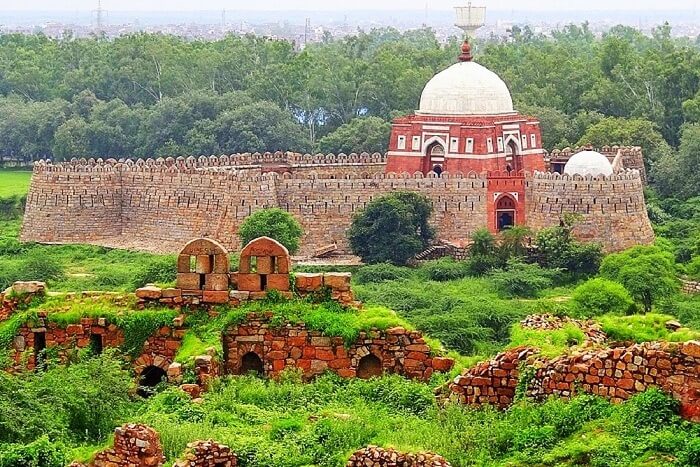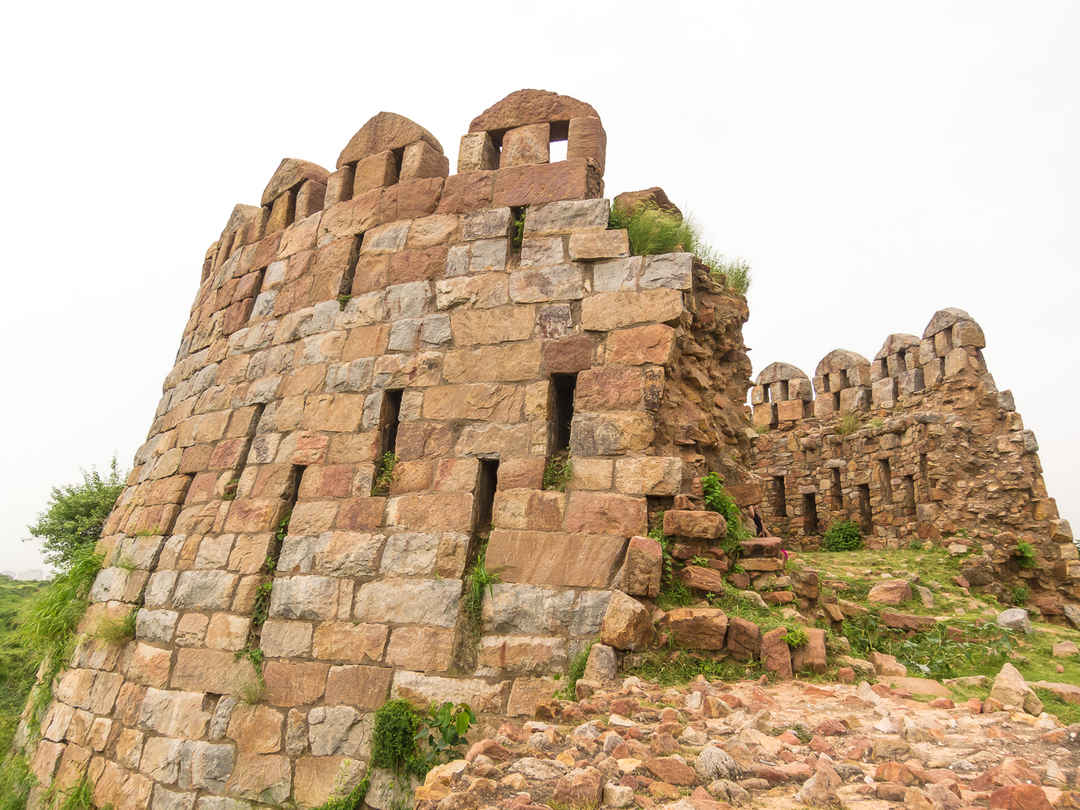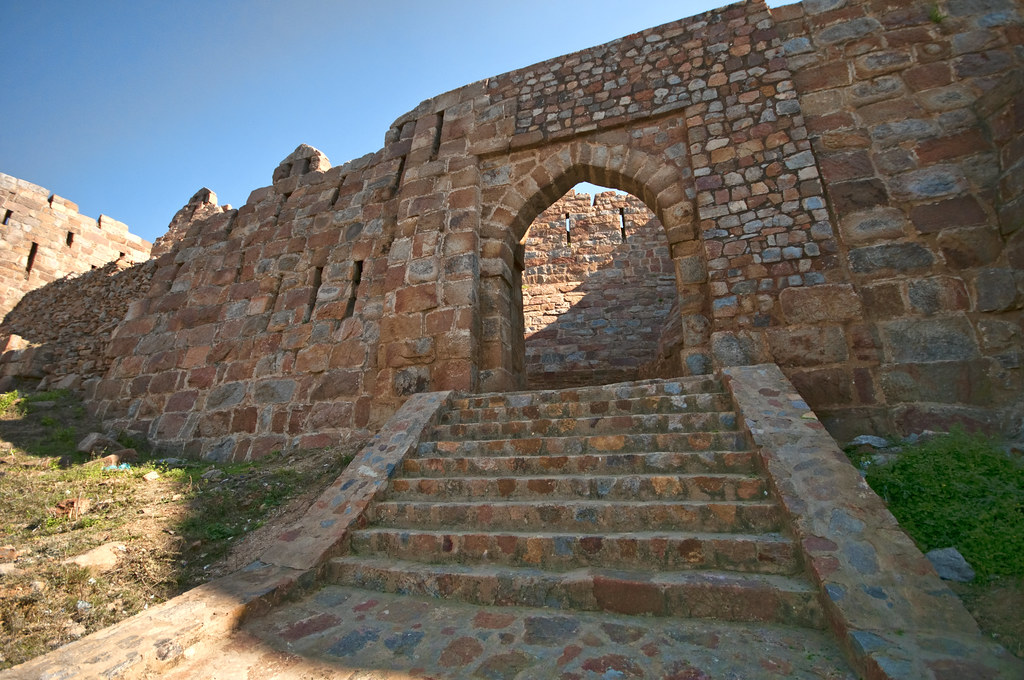Unheard Mysteries of Tughlaqbad Fort
The Tughlaqabad Fort is a massive ruin that sits in the shadows of the chaos of contemporary Delhi and is surrounded by the sand and dust of stories that have passed. The fort is now beyond comprehension, built to withstand both invaders and time itself. The walls that once resounded with royal command are now silent and eerie. The ruins seem to come to life as the sun sets, not with stories from the past but with hints of something more sinister. The Tughlaqabad Fort is not your typical ruin. From its inception, it is said to have been cursed, possessed, and doomed.
A forgotten fortress known as Tughlaqabad Fort can be found hidden among the Delhi ruins. This location is so steeped in mystery, betrayal, and curses that it almost appears as though the earth itself is refusing to allow it to exist. The majority of books on history will tell you that Ghiyas-ud-din Tughlaq, founder of the Tughlaq dynasty, built the fort in 1321 as a strong defense against Mongol invasions.
The year was 1321. Ghiyas-ud-din Tughlaq, the founder of the Tughlaq dynasty, envisioned a fortified city that would rival anything built before. He chose a desolate hillock in southern Delhi and ordered a massive stone fortress to be erected at lightning speed—a place that would be both his capital and his legacy.
The architectural ambition was staggering. Stretching over 6.5 km, the fort was encased in 10–15-meter-thick stone walls, topped with battlements and bastions. Its construction was swift—so swift, in fact, that it drew the ire of a man who would change its fate forever.
The Curse of Nizamuddin Auliya
Legend says that Nizamuddin Auliya, a well-known Sufi, was building a baoli (stepwell) nearby at the same time. The saint cursed the building when the Sultan sent all workers to his fort: “Let it remain barren, or be occupied by shepherds,” as the saying goes, “Ya Rahe ujar, ya base Gujjar.” The curse was viewed by many as nothing more than anger, but history seemed to follow it. In 1325, Ghiyas-ud-din mysteriously passed away after being crushed under a pavilion during a reception that his own son, Muhammad bin Tughlaq, had planned. The fort was abandoned shortly thereafter, and Gujjar shepherds moved in. The city of ambition was abandoned. Centuries later, Tughlaqabad remains mostly uninhabited.
Guests report abrupt decreases in temperature. voices in the distance with no discernible source. a strong sense that you are being watched. Old armor-clad apparitions seen from a distance before vanishing. Animals acting erratically in close proximity to particular parts of the fort. After dusk, the fort, according to Delhiites and investigators of paranormal activity, takes on an inexplicable ominous quality. It is psychological, according to some. Others say it’s true. But where do these occurrences originate
The Nature-Defying Tomb That Was Forgotten The Tomb of Ghiyas-ud-din Tughlaq is located across a causeway from the southern fort wall. It is an architectural masterpiece with an eerie atmosphere. In contrast to other mausoleums in Delhi, this tomb, constructed of red sandstone and marble, is within a fortified enclosure. The odd thing is that no birds fly above the tomb. A lot of people think it is because of a geomagnetic anomaly. Others refer to it as an additional effect of the Sufi curse. According to local legend, the Sultan was denied peace in both life and death for wronging a saint. It is believed that his spirit is imprisoned, pacing indefinitely between the tomb and the fort.
The Tunnel That Has Disappeared The Qutub complex and the fort are believed to be connected by an ancient underground tunnel. It may have extended even further, enabling kings to flee during sieges, according to some. The tunnel, on the other hand, has mysteriously vanished. Its entire path has not been found by modern excavations. In the 19th and early 20th centuries, local shepherds told stories about people who entered the tunnel and never left. There were whispers that it was a doorway to something else—perhaps a different dimension or the realm of the Jin, the spirits that are prominent in Islamic mysticism.
Lost Tribes and Rituals Not Recorded Occult rituals reportedly took place in the fort’s inner chambers in the late 1800s, according to unverified reports. These included tantric rituals performed with the intention of arousing ancient spirits, evoking power, or even attempting to lift the curse. There are also rumors about “The Lost Tribe of Tughlaqabad,” which are people whose ancestors refused to leave despite the curse. It is said that they communicate in a lost dialect and perform ancient rituals to safeguard the fort’s spirit while living underground in chambers that are not visible on any maps. Although there is no hard evidence, explorers occasionally encounter sealed staircases, strange symbols carved into walls, and ritualistic stone circles
A spectral guardian for the contemporary fort, the fort remains strangely under-visited despite being an Archaeological Survey of India-protected monument. Tughlaqabad, in contrast to other Delhi tourist destinations, lacks amenities and ongoing restoration projects. It seems as though the city would rather it be forgotten. When flying near the tomb, drone photographers have reported strange interference. GPS devices malfunction. Some claim that even Google Maps does not properly label internal chambers. Even investigators of the paranormal exercise caution. In 2019, a paranormal organization based in Delhi sent a team to conduct a nighttime investigation.
What Exactly Is Tughlaqabad Like? Is this a saint’s wrath? The spirit of a king who was betrayed? Or are they simply the echoes of centuries-old violence? According to one theory, Tughlaqabad’s stones themselves are cursed. During construction, many workers died due to rush work and frequent forced labor. The pain and labor swap into the stone. According to science, energy can only be altered rather than destroyed. A place cursed not by ghosts but by the intensity of human ambition, betrayal, and loss may be the true haunting instead of spirits. The fort is open to visitors during daylight. Entry after sunset is officially prohibited
Tughlaq Abad Fort’s ghost stories, in contrast to those of famous Delhi haunts like Bhangarh and Feroz Shah Kotla, are whispered rather than screamed. The locals say, The demolished ramparts are guarded by armored shadows. a fictitious light that drone photographers can see moving through the fort at night. Crying sounds that always occur between 2 and 3 a.m. near the hidden southern walls. A white-robed woman who vanishes when approached and is frequently misidentified as a tourist. She has been pursued by guards, but they have failed, with some temporarily losing consciousness. Officially, the Archaeological Survey of India (ASI) prohibits visitors after sunset for safety reasons; however, local folklore states
Few people are aware that royals used a secret underground tunnel to escape sieges and connect to the Qutub complex in Tughlaqabad. The entrance to the tunnel is blocked off today, and two archaeologists who attempted to explore it in 1992 never returned.
Conclusion: The Tughlaqabad Fort is a sad structure. not only a ruin, but also a lesson in arrogance. a location in which spiritual power prevailed over political ambition. The curse continues to exist despite centuries. The fort still stands, majestic but lifeless, and visitors are the only ones who dare to question the unknown. Tughlaqabad Fort is haunted, whether you believe in ghosts or not, by shadows, silence, and unspoken tales. Tughlaqabad is the city that never breathed in a city that is alive.


